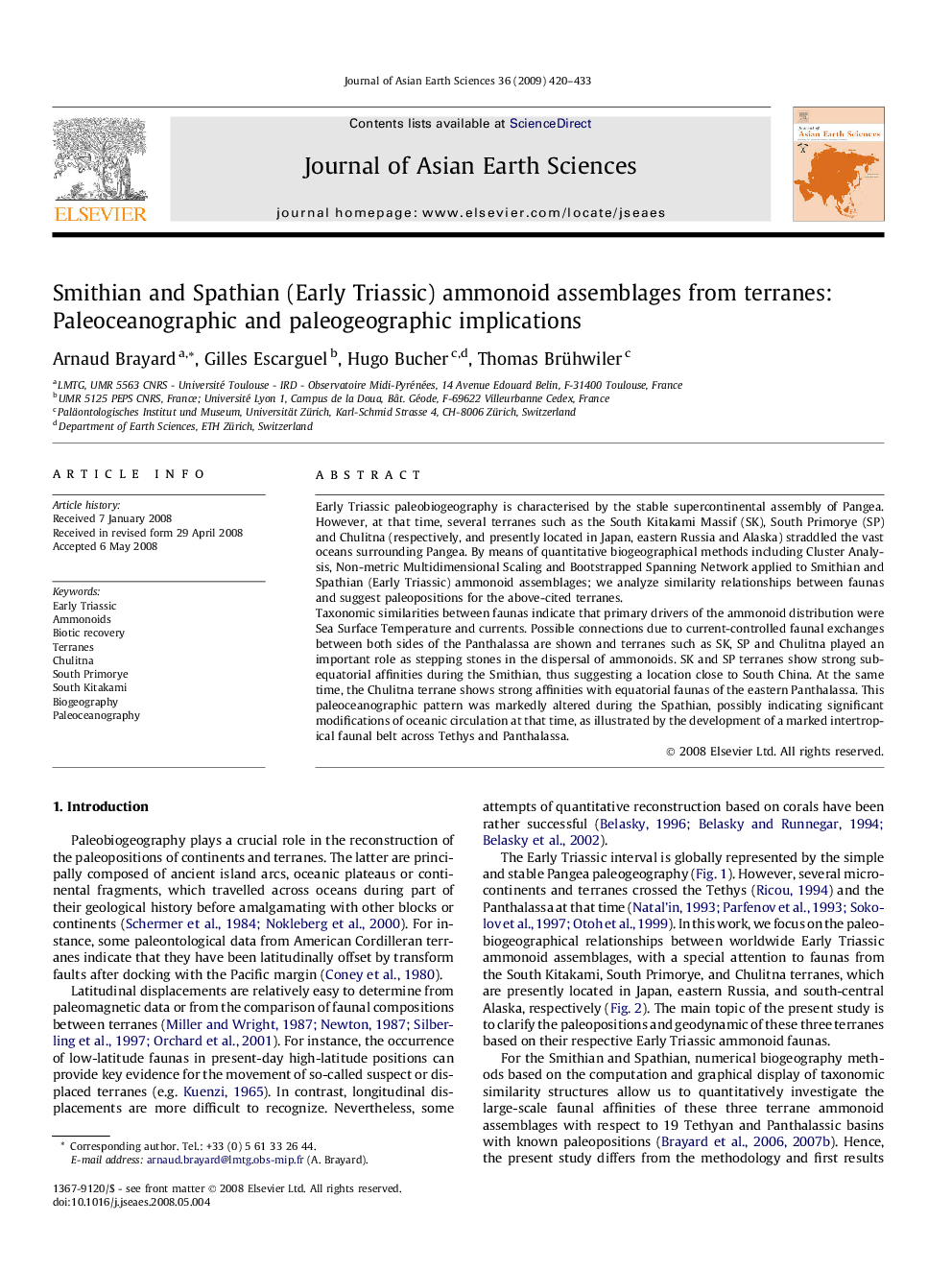| Article ID | Journal | Published Year | Pages | File Type |
|---|---|---|---|---|
| 4732263 | Journal of Asian Earth Sciences | 2009 | 14 Pages |
Early Triassic paleobiogeography is characterised by the stable supercontinental assembly of Pangea. However, at that time, several terranes such as the South Kitakami Massif (SK), South Primorye (SP) and Chulitna (respectively, and presently located in Japan, eastern Russia and Alaska) straddled the vast oceans surrounding Pangea. By means of quantitative biogeographical methods including Cluster Analysis, Non-metric Multidimensional Scaling and Bootstrapped Spanning Network applied to Smithian and Spathian (Early Triassic) ammonoid assemblages; we analyze similarity relationships between faunas and suggest paleopositions for the above-cited terranes.Taxonomic similarities between faunas indicate that primary drivers of the ammonoid distribution were Sea Surface Temperature and currents. Possible connections due to current-controlled faunal exchanges between both sides of the Panthalassa are shown and terranes such as SK, SP and Chulitna played an important role as stepping stones in the dispersal of ammonoids. SK and SP terranes show strong sub-equatorial affinities during the Smithian, thus suggesting a location close to South China. At the same time, the Chulitna terrane shows strong affinities with equatorial faunas of the eastern Panthalassa. This paleoceanographic pattern was markedly altered during the Spathian, possibly indicating significant modifications of oceanic circulation at that time, as illustrated by the development of a marked intertropical faunal belt across Tethys and Panthalassa.
